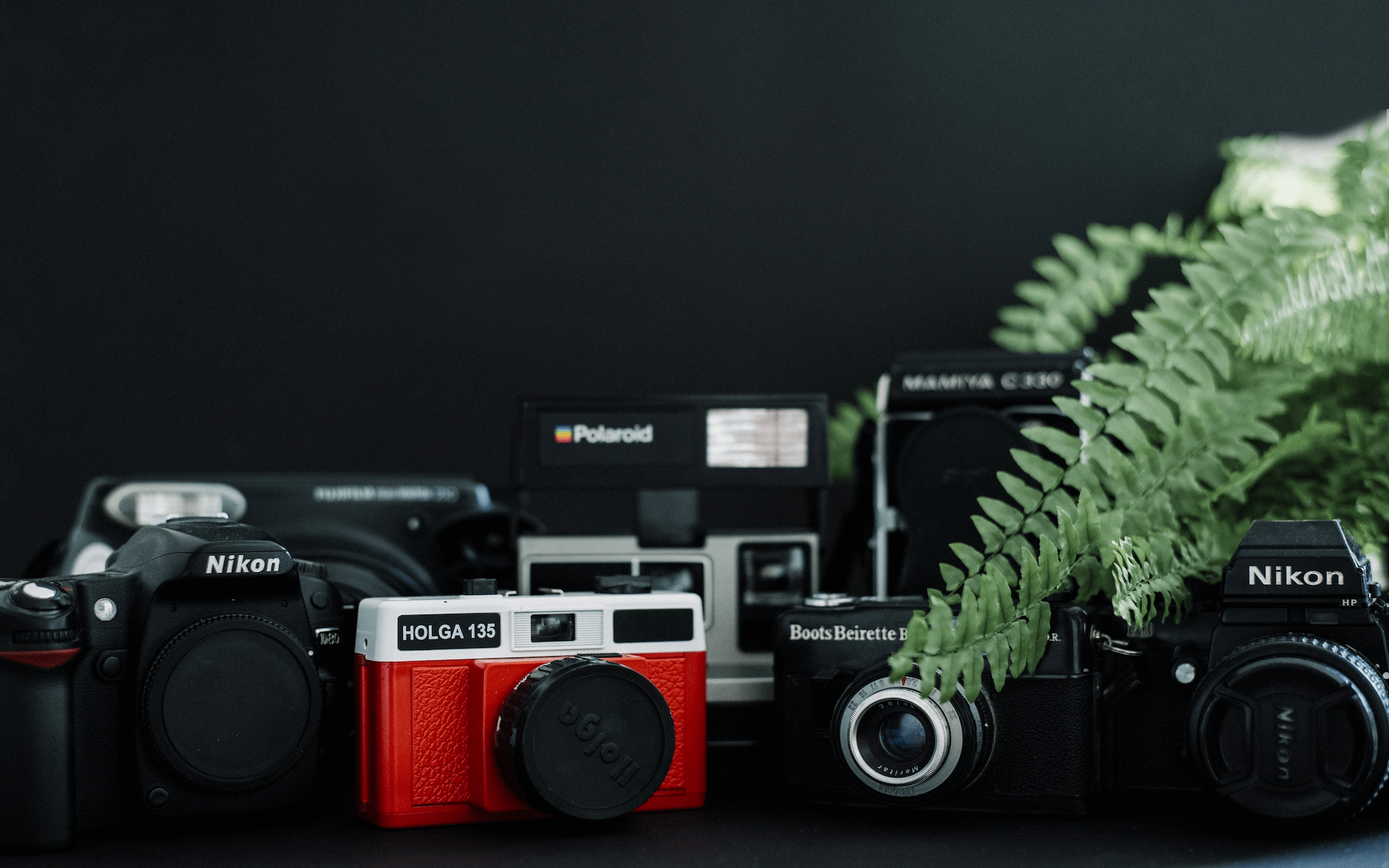There are countless new cameras on the market and shopping for your photography equipment now can be intimidating. We made this must-read guide to compare the type of camera, price, and use so that you can easily find the right camera for you. This can be used by beginners, intermediate, or advanced photographers.
Types of Cameras
DSLR (digital single lens reflex)
Photo courtesy of Ramiz Dedakovic
DSLRs are one of the most popular options for technical camera buyers and professionals. They have a body and an interchangeable lens. An advantage of a DSLR camera is that you have access to a large selection of lenses from different manufacturers. DSLR’s also have a mirror that allows you to look through and see how your image will actually appear more accurately than other types of cameras. DSLRs also have a very long battery life. DSLRs have a large price range from $500-$8,000. Investing in high quality lenses can be pricey but if you are using it for professional reasons, you will see a return on your investment. DSLRs have been around longer so you are more likely to find used, affordable lenses than you might find with a Mirrorless camera. The disadvantages are the size; DSLR’s can be larger and bulkier than others.
Mirrorless
Photo courtesy of Dragos Grama
Mirrorless cameras are similar to DSLRs, can also have an interchangeable lens, but are slightly less complicated and customizable. The advantages of Mirrorless cameras are they are smaller and easier to carry around than DSLRs. The disadvantages of a Mirrorless camera is a shorter battery life, they do not have a mirror to see how your photo will turn out as accurately as the DSLR has, they also have a less advanced frame sensor than DSLR which make them less ideal for low light environments. Mirrorless cameras are great for personal work as they are easier to carry around than the DSLR, but aren’t quite as advanced yet. Also, even though Mirrorless cameras are advanced, they haven’t been around for as long as DSLRs and therefore it is less likely to find a used, affordable Mirrorless camera. However, there are some budget friendly options for Mirrorless cameras that you can find.
Point-and-shoot
Photo courtesy of Sonnie Hiles
Point-and-shoot cameras are the smallest and most affordable option. The advantages of a point-and-shoot camera is the size and the price. They do not have an interchangeable lens and are known for their portability and for being a very budget friendly option. The disadvantages of the point-and-shoot camera is the lack of manual controls, and their small sensors which lead to lower quality photos. The point-and-shoot is a good option for anyone looking for a non-professional, simple, and portable camera.
Action
Photo courtesy of Jakob Owens
Action cameras are unique for the ability to mount them in different places (like a ski helmet, or a bicycle) and capture a real, authentic, action shot. They are mainly used for video, and aren’t recommended to replace a photography camera. The advantages of an action camera is the video capability, portability, and waterproofness. The disadvantages of an action camera is their limitation with manuel settings and photo taking ability.
Finding the right camera for you
The most important part of choosing the right camera is choosing the one right for you and your needs. It’s important that the camera is comfortable for you to hold, it produces the quality and type of images you desire, and is within your budget. In summary, the DSLR is the right camera option for a professional photographer, with the largest budget, who also is able to maneuver it with its larger size. The Mirrorless camera is the best option for the serious hobbyist photographer, who is more comfortable with a smaller sized camera, and also who has a larger budget. The point-and-shoot camera is the best option for the photographer looking for something very simple, lightweight, and portable and is willing to sacrifice image quality for portability. The action camera is a great add-on for the photographer looking to take action video clips or timelapses and needs a more durable and portable camera.
Ergonomics
Photo courtesy of Ramiz Dedakovic
Ergonomics is how the camera feels in your hands. This is arguably the most important point, because if you are uncomfortable holding and using your camera, you most likely won’t use it and it will sit dusting on your shelf. It is recommended to go to your local camera store and hold some cameras and test how well you can reach all the buttons, see if it is too heavy or light for you, make sure it is durable enough for the adventures you will go on, and lastly to make sure the menu system isn’t overwhelmingly complicated for you. The sweet spot of buying a camera is one that is budget friendly, and just generally feels right in your hands.


